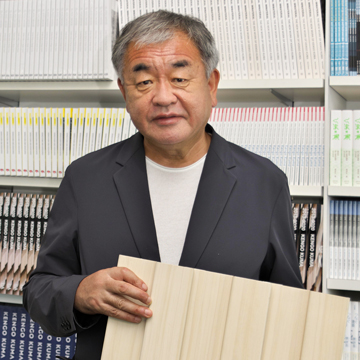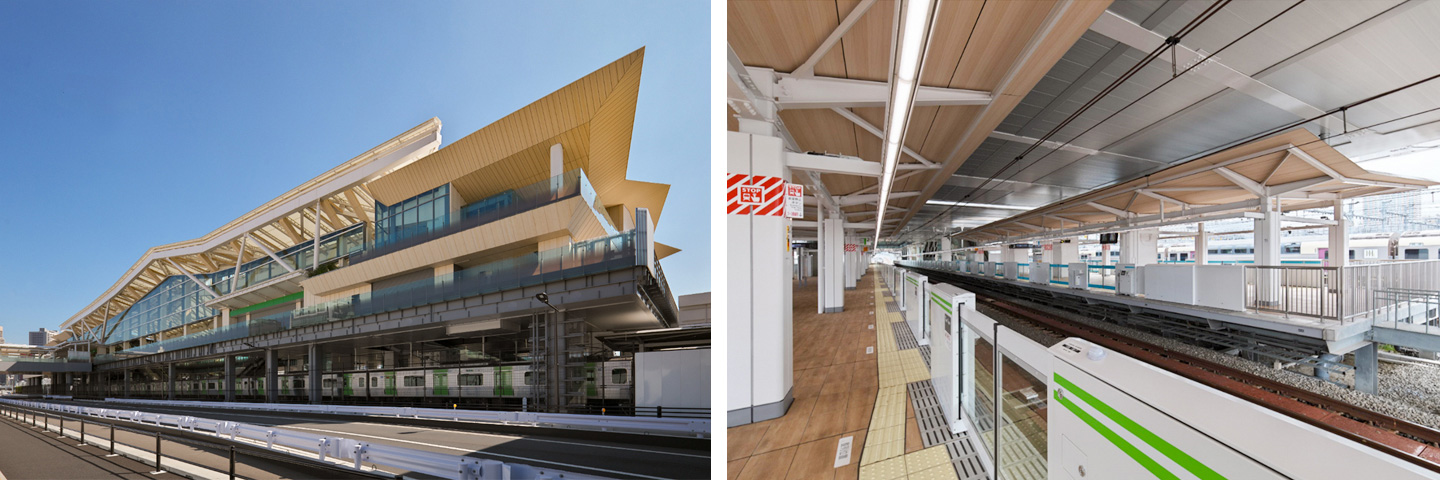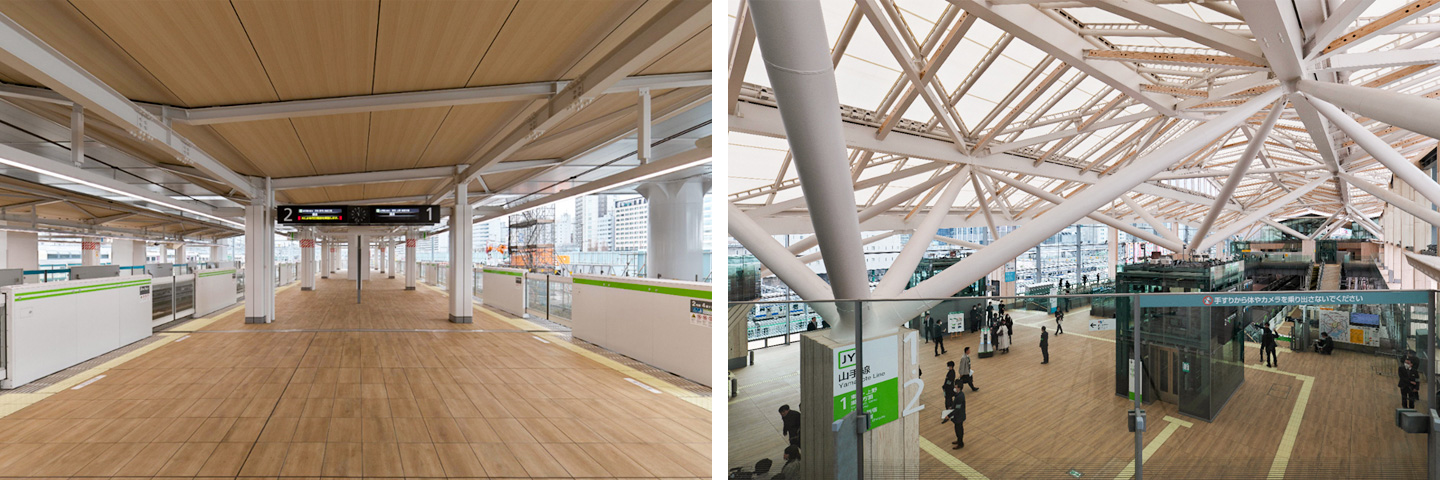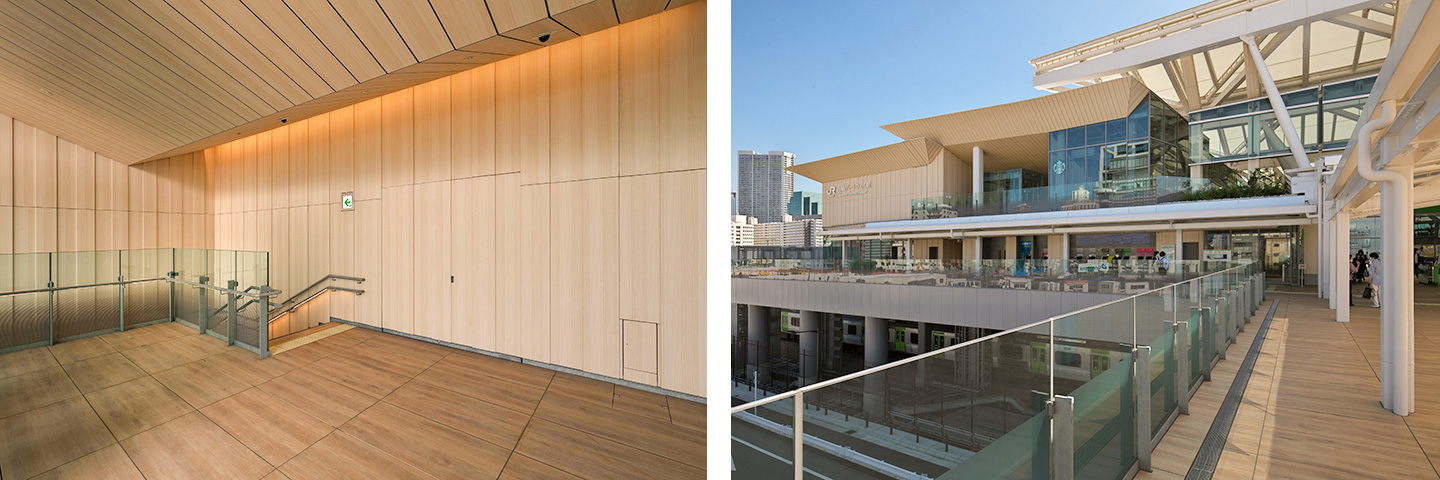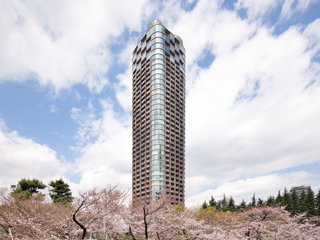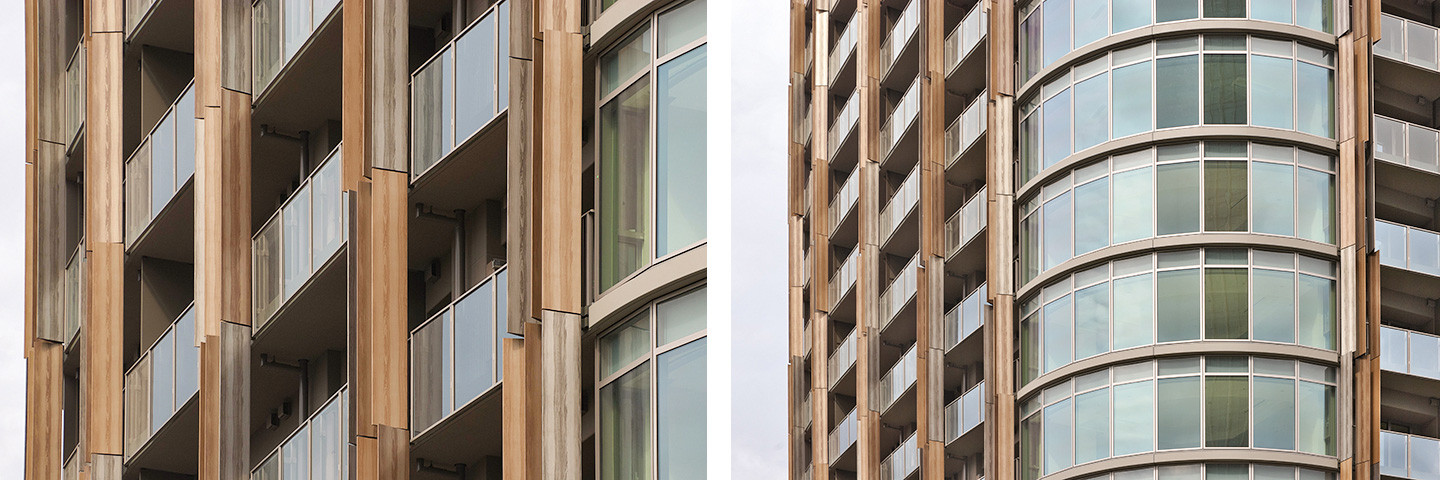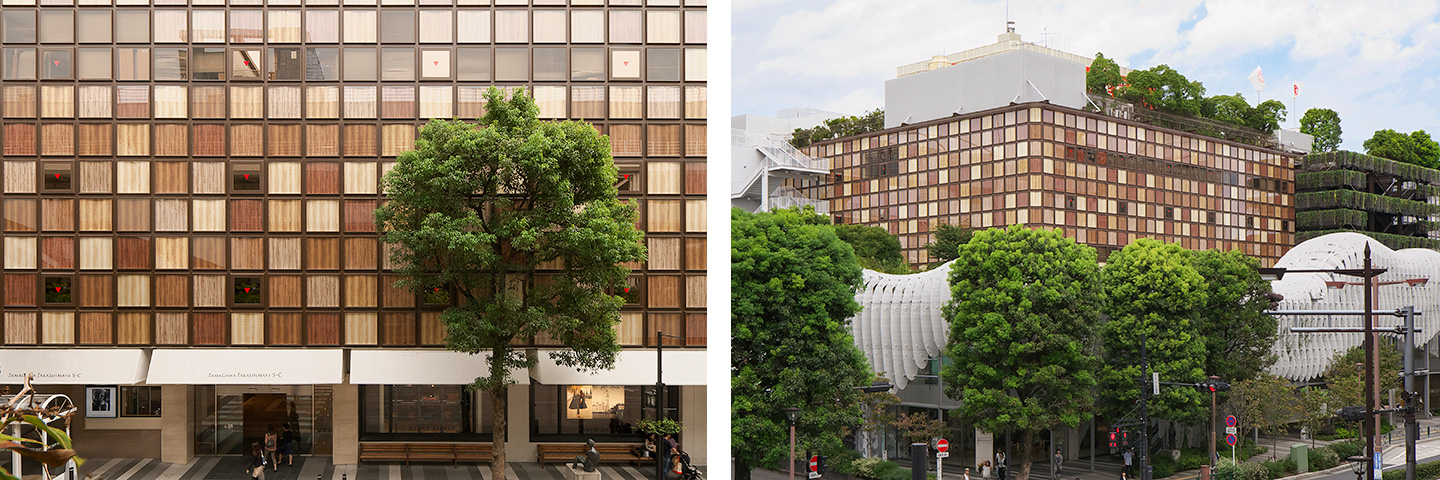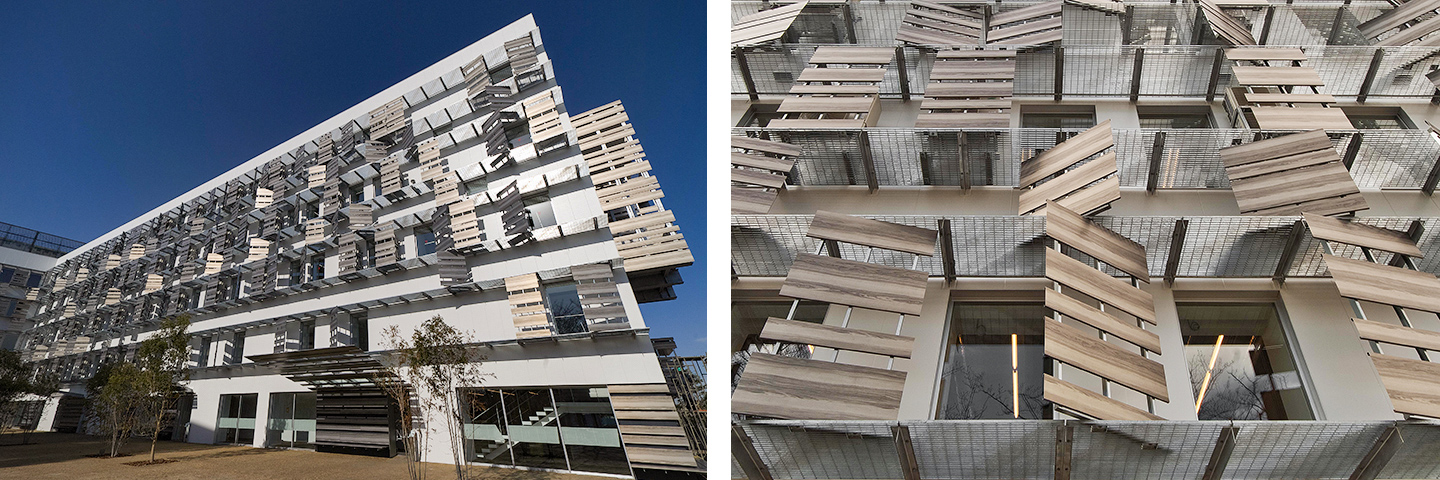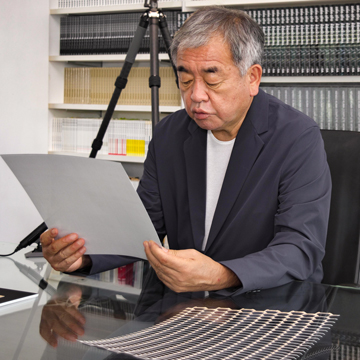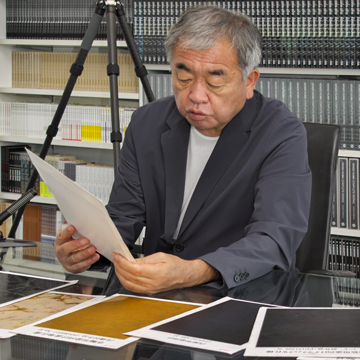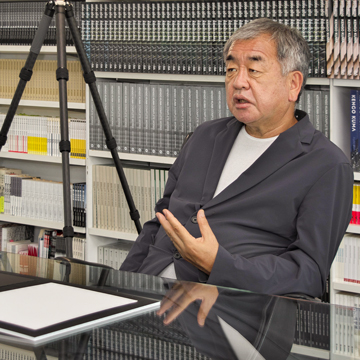Kengo Kuma and Associates
Special Interview
Kengo Kuma on DNP Aluminum Decor Panel and the future challenges of architecture
World-renowned Japanese architect Kengo Kuma, who has used DNP Aluminum Decor Panel, DNP's decorative aluminum panels for interior and exterior, in many of his architectural works, talks about how DNP Aluminum Decor Panel was adopted, the effects of its use, and the future of architecture.
*This interview was on Aug, 2021
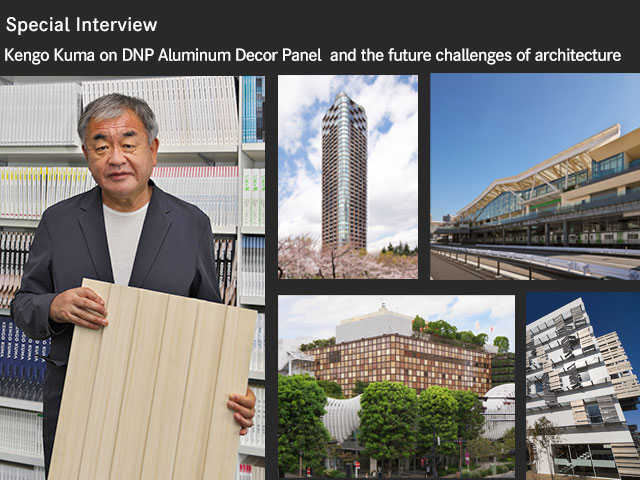
See 11 related fields
DNP Aluminum Decor Panel
About DNP Aluminum Decor Panel
- Please tell us the reason you have been using DNP Aluminum Decor Panel for almost 10 years. -
I believe we are entering a new era; going from the era of concrete and steel into the age of natural materials.
However, there are still maintenance issues and limited parts where wood can be used in exterior application.
DNP Aluminum Decor Panel is easy to maintain and has the same texture and expression as wood which is why I use it on many projects.
|
|
It is lightweight, weather-resistant and can be customized into a variety of colors and textures. These are important points for architectural projects.
Before it was the case that only such and such wood can fit a certain building or region specific.
DNP Aluminum Decor Panel is able to offer a broad range of material to accommodate our various requests.
Cases
Case of Takanawa Gateway railway station
- DNP Aluminum Decor Panel usage in the new Takanawa Gateway railway station. -
For Takanawa Gateway railway station we used a mix of real wood and DNP Aluminum Decor Panel, but nobody could tell the difference!
|
|
Railway stations require more weather-resistant materials than other buildings.
In the event of any damages, it might be necessary to stop trains in order to make repairs.
They are very delicate building structures which is why the weather-resistant qualities of DNP Aluminum Decor Panel is so important and necessary.I believe that railway stations, which represents industrialization, will continue to need the aesthetics of wood in the future.
As the new age is ushered in, Takanawa Gateway will become a symbol of railway stations.
This is why I believe that DNP Aluminum Decor Panel will be needed.
|
|
- I have heard that your concept for Takanawa Gateway railway station was an integrated station-city development. -
In the future, walkability in cities will be very important.
A walking-oriented lifestyle, including walking for pleasure, will emerge in the future.
In this age, material being in tune with the walking atmosphere is extremely important.
|
|
Takanawa Gateway railway station will be a new station that serves as the base for the walking lifestyle or be the point from which a walking lifestyle begins.
This is why many DNP Aluminum Decor Panel style initiatives will be needed!
Case of Park Court Akasaka Hinokicho The Tower.
- DNP Aluminum Decor Panel usage in Park Court Akasaka Hinokicho The Tower. -
Given the height of high-rise condominium weather resistance is an extremely important element.
We took on the challenge of creating spaces where people could enjoy the aesthetic wood and be weather resistant.
This is why we selected DNP Aluminum Decor Panel.
|
|
The decisive factor was the color variations offered.
High-rises have many floors, so if you carelessly use materials with the same tone it can become monotonous.
DNP Aluminum Decor Panel makes it possible to express the aesthetic of wood through delicate color changes.
Through Park Court Akasaka Hinokicho The Tower, we were able to create a high rise that was not monotonous in material used.
Innovations such as these will be increasingly sought after with The Tower serving as inspiration.
|
|
20th Century high-rises were created by repeating the same concepts within the same units.
In the future, it will be necessary for high-rises to be more diverse and expressive.
This is why I believe DNP Aluminum Decor Panel, with its broad range of materials and customizability, will play an active role.
- Expression of the printed woodgrain in Exterior -
Normally Japanese people use wood in single or two-story buildings.
When wood is seen up close to the human eye, the grain of the wood appears precisely as it should.
Once seen from a distance, especially in a multi-story high-rise, the grain disappears and can appear merely as a solid color.
In these cases, slightly increasing the dimension of the wood grain, or emphasizing the color tint can make the material appear more like wood.
DNP Aluminum Decor Panel has the effect of making the material feel more like wood than the real thing!
We first attempted this at Tamagawa Takashimaya and would like to test a variety of different options based on the size of the buildings or based on the distance observed.
I'd like to attempt manipulating color tones and patterns.
|
|
・In the case of Tamagawa Takashimaya, we actually put different materials on the building side by side and decided the best one based on the observations from various angles.
The human eye is fascinating in the fact that it can be fooled by a variety of illusions.
It is very important to actually stand there and observe the material to see what will work for the mock-ups.
Expectations
- Expectations you have for DNP Aluminum Decor Panel in the future -
Typically printing is performed on flat surfaces. However, DNP Aluminum Decor Panel can be printed on more complicated surfaces that express realistic woodwork.
It may also be possible to add texture to different designs in different shapes. There are most likely an infinite amount of combinations & it would be exciting if DNP Aluminum Decor Panel could overcome the existing printing barriers.
Real wood shows subtle irregularities. When sawn, even in straight line, wood has irregularities that can be seen.
I believe this type of challenge can be overcome with DNP Aluminum Decor Panel.
|
|
With Park Court Akasaka Hinokicho The Tower and Toyo University you can feel the wood grain even printed on an aluminum base.
I believe that cities in the future, there will be a demand for such intermediate - material that sits between natural and man-made.
I believe that DNP Aluminum Decor Panel is capable of producing something that is both cool and warm. I would like to continue this challenge.
Overseas projects
- How do you select materials for overseas projects? -
Material is far deeper than we can imagine.
Let's take cedar as an example. Cedar has a thickness of 2 cm and depending on its origin location may have a different color. The texture may also be different depending on which part of the cedar is cut out and the sawing method used.
We need to actually go to the location where the cedar is farmed and make individual mock-ups, otherwise it will be difficult to use such locally sourced materials.
Our approach is to develop an in-depth relationship with each of those localities.
Taste differs by country. I feel that I've come to understand that there are many different things we want from our buildings.
For example, the demand of color tones in China, or the US, or Brazil are all subtly different!
|
|
The light in each place is different. When humidity levels change, the light also changes.
Even the same tone of red can look different depending on location.
We wouldn't understand this unless we bring the material to the place where they will be used.
The future challenges of architecture
Sustainability
- What is the relationship between architecture and sustainability? -
The architectural goal until now has been about "style".
There were only two criteria that needed to be met: stylishness and usability.
Now, an important discussion point is sustainability.
What is the type of role that architecture will take on in the global environment? What are the positives and the negatives? I feel this is the most important criteria to emerge now.
Sustainability is increasingly more widespread among the general populace.
I field a great number of questions such as yours and these are the questions that designers and architects must answer.
However, this is not a question that architects alone have respond to.
We have entered an era where the builders and architects have to concern this and prepare various answers to these questions.
From the very beginning of the design phase, it is necessary to show what type of sustainability perspectives exist.
There are numerous calculation methods, such as CO2 emissions or lifecycle energy.
Using materials that make me feel instinctively - "this is sustainable."
I believe such intuitive sustainability will be needed in the future.
|
|
That is the reason why I believe in the importance of constantly making new discoveries.
Such as the realization of "This material is also sustainable!"
In the future, I believe it will be necessary for everyone to make such discoveries and want them to convey their discoveries to others!
I feel this is becoming the new social norm.
DNP Aluminum Decor Panel is very lightweight. This makes it possible to reduce the overall weight of buildings which also reduces the burden on the Earth.
I really feel that being lighter is a good thing in a sustainability prospective as well.
I believe it would be a great if aluminium recycling could be showcased in a good format visually.
The New Normal
|
|
- Please tell us something about how architecture and space will change under the New Normal. -
I believe that the boundary between interior & exterior space will become increasingly ambiguous in the future.
The 20th century was the era of enclosed spaces; with the idea that efficiency was based on how many people can be in one closed space.
Along the lines of blasting the air conditioner in a closed space, while packing in the people and making them work!
The idea was that efficiency was based on packing human beings into closed spaces!
Nowadays such enclosed spaces are considered to be dense and unpleasant.
Moving forward, I believe that semi-exterior space will take center stage.
Semi-exterior refers to locations that use canopies or are protected by small screens. This concept requires substantial weather resistance but at the same time requires a certain type of interior "gentleness."
I believe we will see a steady increase in the need for semi-exterior spaces. I think it would be a good thing if we can produce materials that can accommodate both of these needs.
|
|
Buildings and gardens are becoming increasingly integrated. An intermediate space between the two has emerged.
For me, this is the meaning of harmony with nature in the future.
The boundary between space between interior and exterior has always been ambiguous for the Japanese space concept.
Japan provides hints as to what space will evolve into in the aftermaths of densed and enclosed spaces.
I look forward to the increasing the focus on Japan in the future!
Product or service introduced in this case study
-
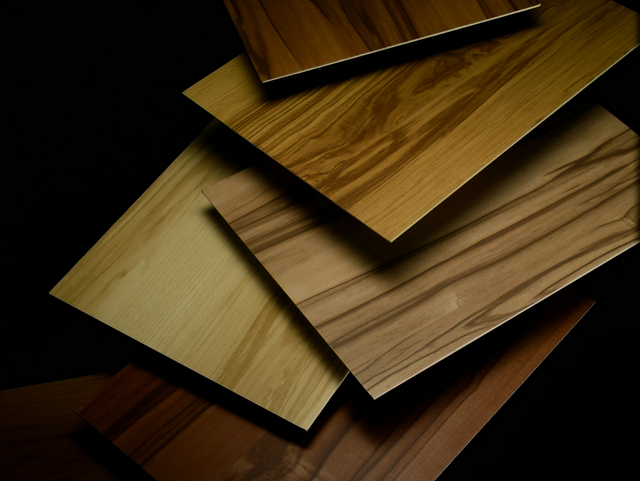
DNP’s Artellion, a high-value added aluminum panel series, provides unique and rich expressions for interior, semi-exterior and exterior applications for architectural projects.
See 11 related fields
